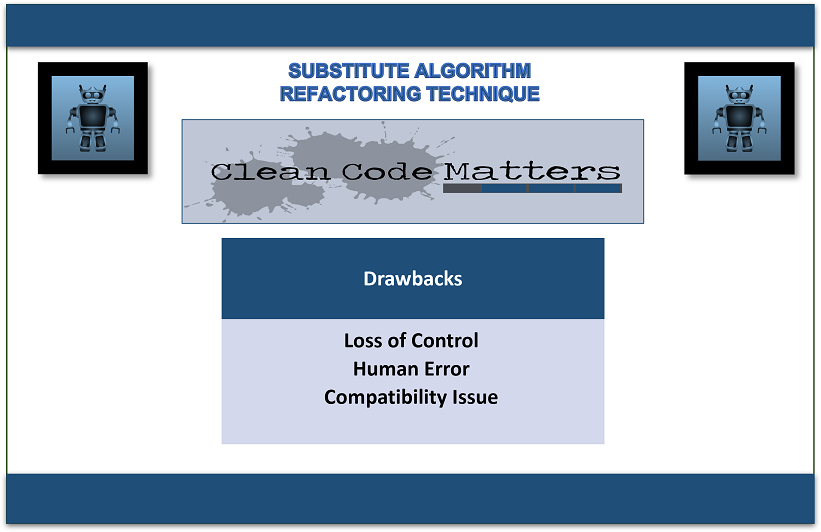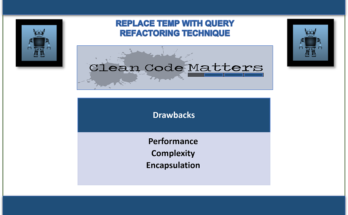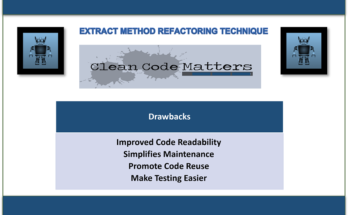Substituting a new algorithm that produces the same result for the method’s implementation is a refactoring approach known as a substitute algorithm. This is useful when the original method is very complex, inefficient, or challenging to understand.
Ways to Apply Substitute Algorithm Refactoring Technique
You can take the following actions to implement the Substitute Algorithm refactoring technique:
- Understand the function and behavior of the method you want to refactor.
- Create a new algorithm that yields the exact same results as the previous one. Make sure to thoroughly test the new algorithm to make sure it functions as intended.
- Replace the original method’s implementation with the new algorithm. To accomplish this, copy the new code, then paste it over the existing code.
- To check that the refactoring did not cause any issues or regressions, test the application once again.
- Optimize the new algorithm as necessary to raise its readability or performance.

Problem
So you want to swap out an old algorithm for a new one?
Before Refactoring
# Existing algorithm
def calculate_square_root(n):
# Algorithm implementation
print(n*n)
In this example, we will demonstrate how to calculate the square root of a given number n using an existing method named calculate_square_root. Let’s imagine, however, that we want to investigate an alternative since we have found some shortcomings or performance concerns with this approach.
Solution
Replace the existing algorithm in the method’s body with a new one.
After Refactoring
# Substitute algorithm
import math
def calculate_square_root(n):
return math.sqrt(n)
In this refactoring, we’ve swapped out the original algorithm for one supplied by Python’s built-in math.sqrt() function. The replacement technique makes use of the precise and well-optimized square root calculation available in the math library.
We can address any restrictions or performance difficulties related to the original implementation by replacing the original algorithm with the built-in function. The code becomes clearer, and shorter, and depends on a library function that has been tried, tested, and optimized.
Drawbacks of Substitute Algorithm Refactoring Technique
The readability, maintainability, and performance of code may generally be enhanced safely and effectively using the substitute algorithm technique. You should be mindful of the following potential downsides and limits, though, as with any refactoring technique:
- Loss of control: If the new algorithm has different performance characteristics or edge situations than the original algorithm, the application’s behavior can change. Therefore, it is essential to thoroughly evaluate the new algorithm before putting it into use.
- Problems with compatibility: The new algorithm may employ different libraries, data structures, or programming techniques than the original algorithm, which may cause problems with other parts of the application or code from third parties.
- Human error: There is a chance of making mistakes or missing edge situations when swapping out the previous approach with the new algorithm, which could result in bugs or regressions in the code.
Resolving Strategy
To deal with these risks, here are some solutions:
- The new algorithm should be thoroughly tested before being put into use to make sure it works as intended and doesn’t lead to regressions. To verify the functioning of the code, you can use unit tests, integration tests, or other testing techniques.
- Track code changes with version control systems, and if required, roll back to a previous version. You can use this to fix compatibility problems or make up for mistakes made by people.
- Participate in refactoring with other team members or stakeholders to gather input and spot potential problems. This can aid in catching mistakes or edge instances that you may have missed.
In conclusion, the substitute algorithm technique can be an effective way to increase code quality, but it’s vital to use it carefully and take precautions to reduce the dangers.
You may read our other blogs here:


